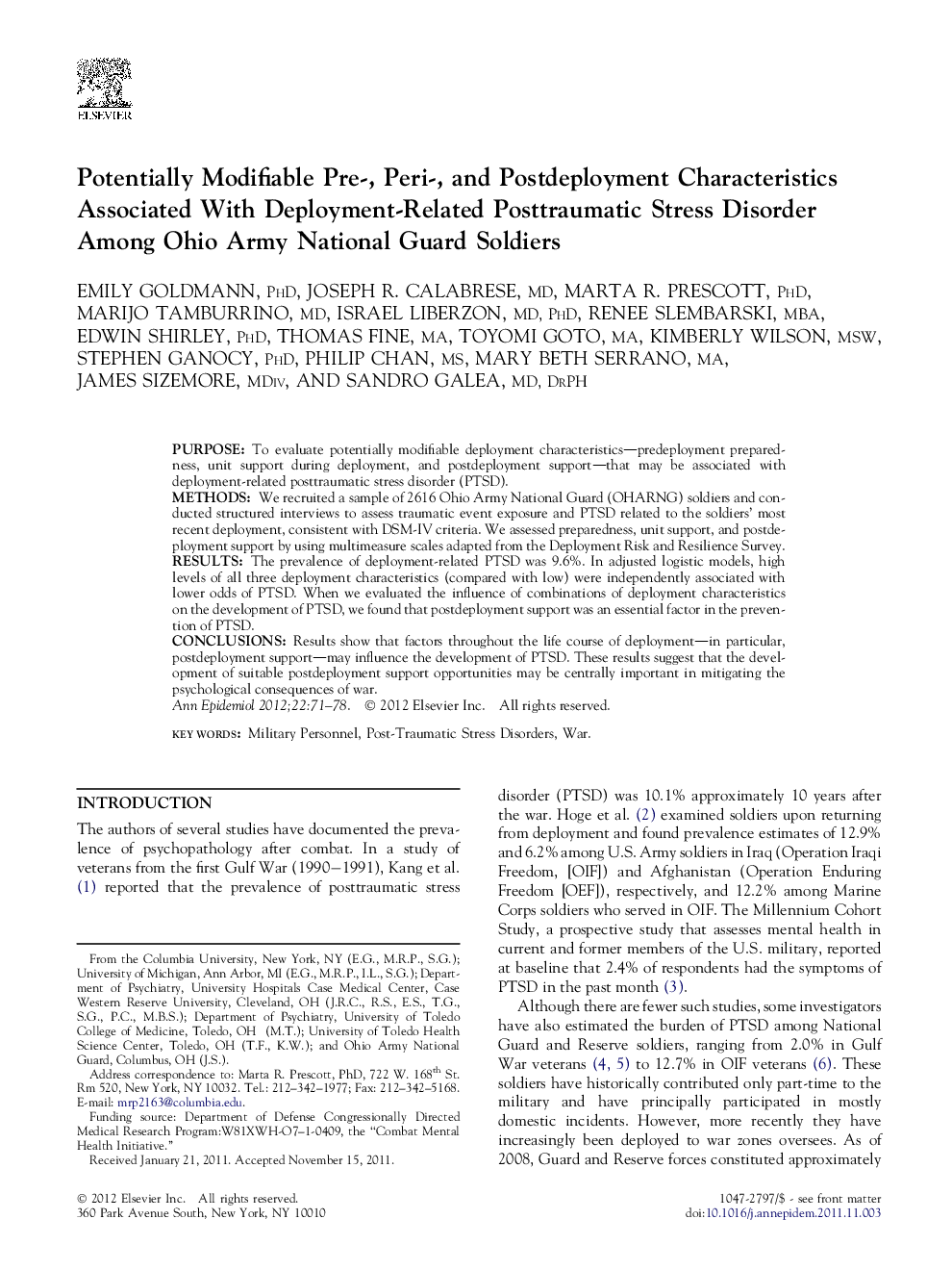| کد مقاله | کد نشریه | سال انتشار | مقاله انگلیسی | نسخه تمام متن |
|---|---|---|---|---|
| 3444355 | 1595282 | 2012 | 8 صفحه PDF | دانلود رایگان |

PurposeTo evaluate potentially modifiable deployment characteristics—predeployment preparedness, unit support during deployment, and postdeployment support—that may be associated with deployment-related posttraumatic stress disorder (PTSD).MethodsWe recruited a sample of 2616 Ohio Army National Guard (OHARNG) soldiers and conducted structured interviews to assess traumatic event exposure and PTSD related to the soldiers’ most recent deployment, consistent with DSM-IV criteria. We assessed preparedness, unit support, and postdeployment support by using multimeasure scales adapted from the Deployment Risk and Resilience Survey.ResultsThe prevalence of deployment-related PTSD was 9.6%. In adjusted logistic models, high levels of all three deployment characteristics (compared with low) were independently associated with lower odds of PTSD. When we evaluated the influence of combinations of deployment characteristics on the development of PTSD, we found that postdeployment support was an essential factor in the prevention of PTSD.ConclusionsResults show that factors throughout the life course of deployment—in particular, postdeployment support—may influence the development of PTSD. These results suggest that the development of suitable postdeployment support opportunities may be centrally important in mitigating the psychological consequences of war.
Journal: Annals of Epidemiology - Volume 22, Issue 2, February 2012, Pages 71–78